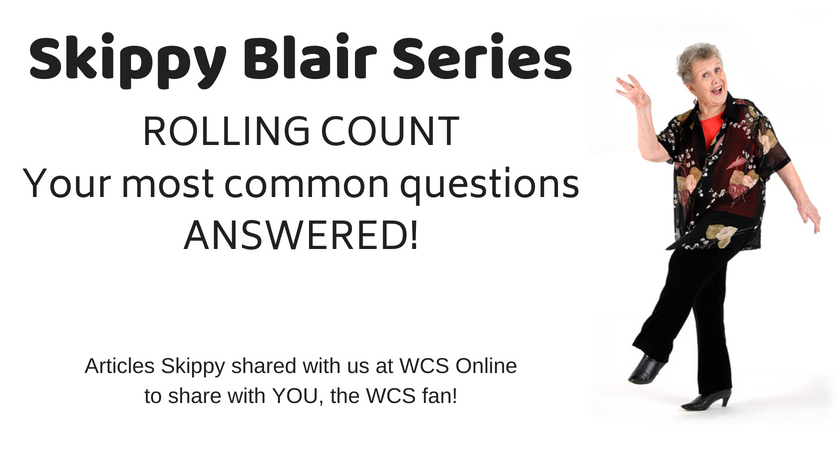ROLLING COUNT – Weight Distribution of the “&a” AND identifying “Beat Count”
1. Beat Count
GSDTA calls it “Beat Count” when we refer to listening and/or counting out BEATS of MUSIC (1 2 3 4 5 6 7 8). When we are WALKING – or just STEPPING, moving forward in Double Rhythm, we count regular ROLLING COUNT! ( “&a1&a2 &a3&a4 &a5&a6 &a7&a8”).
Please Note: There is NO weight-change on that first “a” count, so the first “&a” of the Unit simply becomes the “movement of the “CPB” (Center Point of Balance), to the location of the NEXT Beat of the music.
2. “&a1 &a2”
“lf I walk forward on “&a1 &a2” – simply stepping “&a Right &a Left” my CPB will be traveling forward on both of the “&a” counts. propelled by my Sending Foot. (SAY “&a Step &a Step.”)
3. Walking
When walking around the room (or down the street) – if your “Rolling Count” is working FOR you, your knees will brush, one past the other, on the “a” count, rather than on the “&”count.
4.The “a” in a rolling triple
When I step on the “a” count in a ROLLING TRIPLE – the “&”,following the “1”, belongs to the “1” and that step on “1” will HOLD through the “&” count: (“1&.”) – That will be followed by 2 steps on “a2.” (Simply SAY: “&a Step & Step- Step”).
5. Using your legs in dance
ln Dance, if the legs are moving ahead of the body, WITHOUT using a Sending Foot, the knees will brush past each other – on the “&” count (maybe even sooner). This produces a rushed look makes the feet appear “very busy” and may look “off time”.
6. When teaching rolling count
When TEACHING Rolling Count, make sure that the student understands the process of putting energy and power into the feet and the legs. Do NOT equate power with distance. (Tighten your buttocks and stretch your toes to feel the power.)
7. Stretch your toes apart
Stretching your toes apart, not only places your arch closer to the floor, but also encourages the “sending foot” to press into the floor (which hastens the “Sending Action” on the 3-Toe Base).
8. Measured Movement
Measured Movement is also connected to the “&a” – particularly when it involves turns of any kind. The speed of action either makes or breaks the look of all kinds of rotations. Control the speed of action on the “&a” to arrive at any new location (position) precisely on time. (Arriving early is slightly off time).
Edited: Skippy Blair, © 08-30-11 Updated: 10-24-11, 6/16, 3-9-18.




 Brian & Megan
Brian & Megan